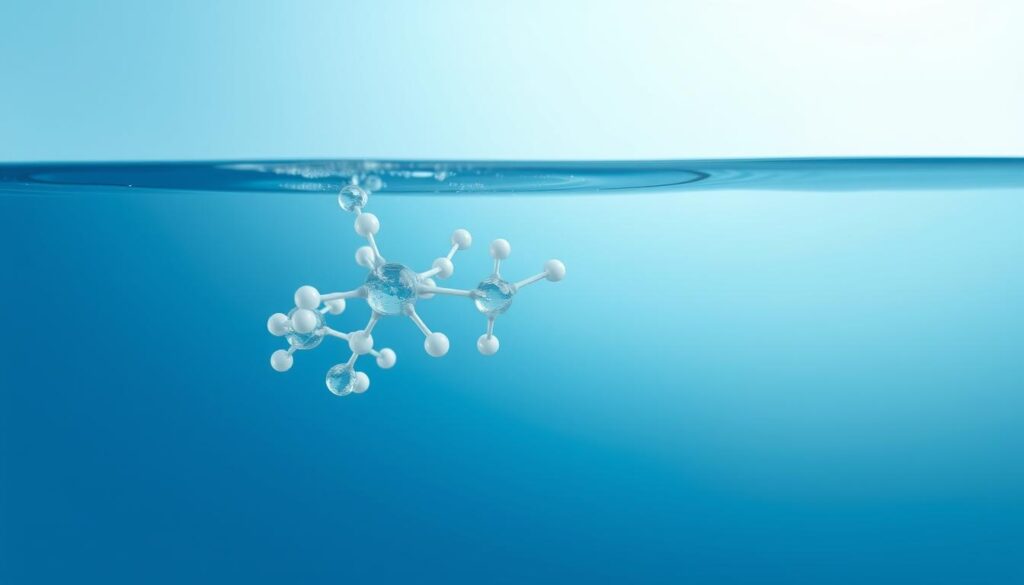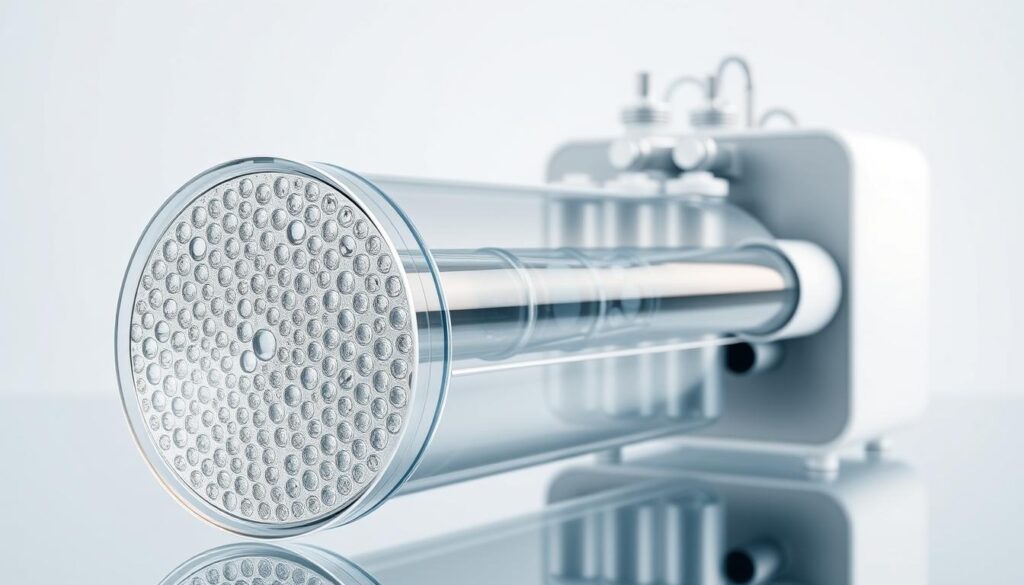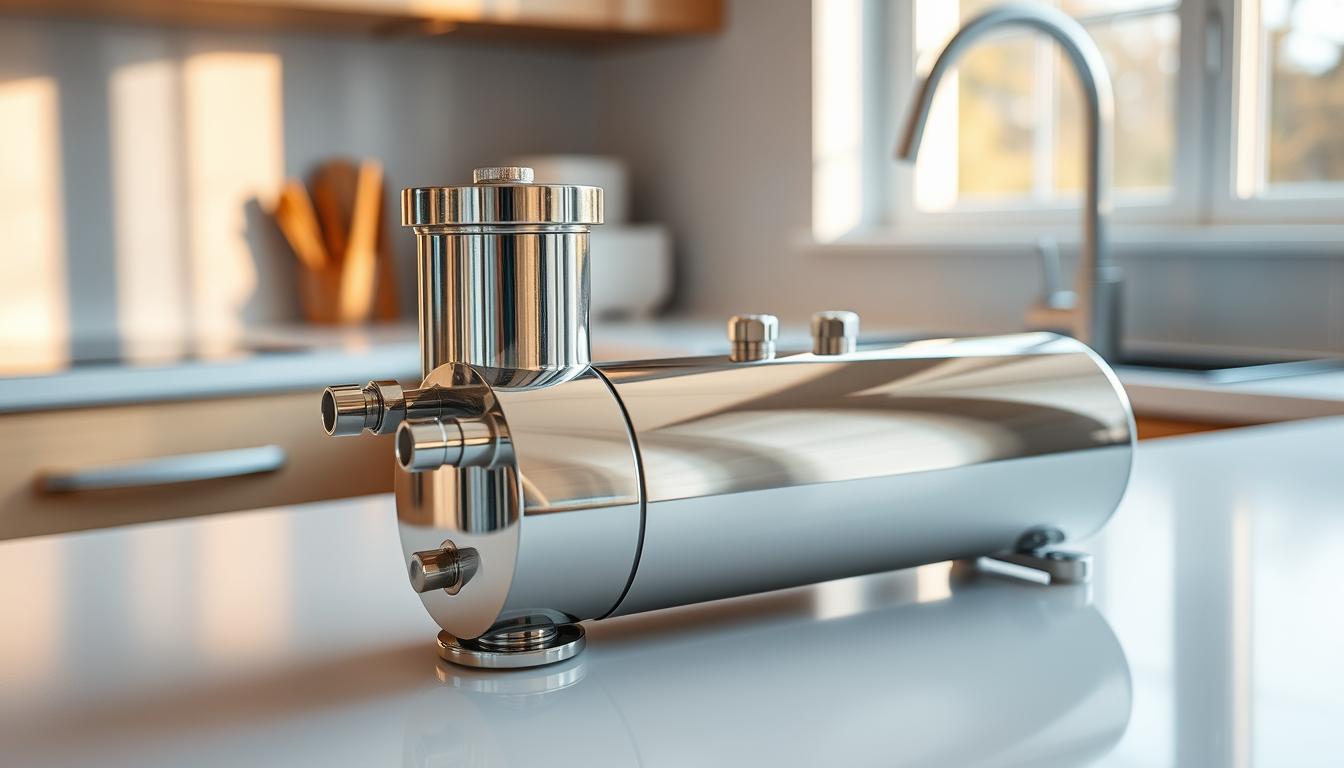We’ve all paused mid-sip, wondering about the safety of what flows from our faucets. That faint chlorine smell after a glass sits overnight. The metallic tang that lingers despite refrigeration. These subtle signs hint at a larger truth: our municipal treatment systems, while vital, sometimes leave unintended traces in drinking water.
One such concern is dibromoacetic acid (DBA), a byproduct formed when chlorine interacts with organic matter during disinfection. Though cities work hard to eliminate pathogens, this chemical residue often slips through conventional purification methods. Studies show it’s present in 1 out of 4 U.S. water systems, yet rarely discussed at kitchen tables.
This isn’t about fear—it’s about empowerment. Modern filtration systems like reverse osmosis offer robust solutions, removing up to 99.9% of contaminants, including stubborn compounds like DBA. Take the CovePure CP-16: independently verified by SGS to meet NSF/ANSI standards 42, 53, and 58, it’s engineered for households prioritizing purity without compromise.
Right now, readers can claim $200 off this advanced system—no codes needed, just a direct visit to their site. We’ll explore how reverse osmosis outperforms pitchers, faucet attachments, and UV treatments in the sections ahead. Because when it comes to what you drink daily, knowledge should flow as freely as your water.
Understanding the Presence and Risks of Dibromoacetic Acid in Water
Modern water treatment walks a tightrope. While disinfectants protect communities from pathogens, they sometimes leave behind chemical shadows. Let’s explore how these necessary safety measures unintentionally introduce compounds requiring our attention.

Origins of DBA in Municipal Water Supplies
Public systems rely on chlorine to neutralize bacteria and viruses. When this disinfectant reacts with organic matter like decaying leaves, haloacetic acids form. Among these, dibromoacetic acid emerges when bromine ions are present—common in areas with geological salt deposits.
This process creates what scientists call disinfection byproducts. Though regulated under EPA guidelines, these compounds persist in many tap water systems. Testing reveals their presence varies by location and treatment methods used.
Health Implications of Chronic DBA Exposure
Long-term consumption carries documented risks. A 2022 Journal of Environmental Health study linked prolonged exposure to liver dysfunction and developmental concerns. Other research associates certain haloacetic acids with increased cancer probabilities, particularly in vulnerable populations.
Compared to similar compounds like trichloroacetic acid, DBA shows higher mobility in biological systems. This means it may interact with cells more readily. While occasional contact poses minimal risk, decades of daily intake amplify potential effects.
Understanding these factors helps households make informed choices. Advanced purification becomes crucial when municipal treatments can’t eliminate all byproducts effectively.
CovePure Reverse Osmosis: How Advanced Filtration Removes Contaminants
The quest for purity demands solutions that outsmart microscopic threats. While standard methods struggle with chemical byproducts, reverse osmosis systems like CovePure’s CP-16 use precision engineering to address modern water treatment challenges.

How CovePure’s Technology Works
At its core, reverse osmosis forces drinking water through a semipermeable membrane with pores 0.0001 microns wide. This physical barrier blocks 99.9% of dissolved solids, including haloacetic acids and chlorine byproducts. The CP-16’s three-stage process enhances this:
- Pre-filtration removes sediment and larger particles
- The RO membrane eliminates dissolved contaminants
- Post-carbon polishing improves taste and clarity
This layered approach tackles everything from HAA5 compounds to heavy metals, addressing multiple contaminants simultaneously.
Validation Through SGS Testing
Independent verification separates effective filtration from marketing claims. CovePure’s system underwent rigorous SGS evaluation, meeting NSF/ANSI standards 42 (aesthetic effects), 53 (health contaminants), and 58 (RO performance). Testing confirmed removal of:
- Chlorine byproducts (99.2%)
- Lead and mercury (99.8%)
- Pesticides (98.7%)
These results prove the system’s ability to deliver clean water free from regulated and emerging threats. Unlike pitcher filters that merely reduce odors, this technology transforms chlorine-treated water into truly safe hydration.
Reverse Osmosis vs. Standard Pitcher Filters: Enhanced Water Treatment
Many households reach for pitcher-style units to address visible particles or odd tastes. While these devices improve clarity and reduce some impurities, their capabilities have clear ceilings when confronting modern water treatment challenges.
What Pitchers Can’t Filter Out
Popular models like Brita use activated carbon to trap larger particles and absorb chlorine odors. This works for basic taste issues but struggles with:
- Dissolved chemicals like haloacetic acids
- Heavy metals below 1 micron
- Persistent disinfection byproducts
Independent tests show pitchers remove less than 50% of regulated contaminants. Even advanced gravity systems like Big Berkey can’t match the precision of semipermeable membranes.
Why Molecular-Level Filtration Matters
Reverse osmosis tackles what pitchers ignore. CovePure’s system eliminates 99.9% of dissolved solids—including compounds formed during disinfection. Unlike carbon-only approaches, it addresses:
- Microscopic matter from treatment plants
- Multiple byproducts simultaneously
- Emerging contaminants like PFAS
While glass water dispensers avoid plastic concerns, they don’t purify tap water. For households prioritizing safety over convenience, advanced systems offer peace of mind pitcher filters simply can’t match.
Best water filter Dibromoacetic acid DBA Buyer’s Guide
How do you choose a system that guards against contaminants you can’t see or taste? This guide cuts through confusion with science-backed criteria for household water quality solutions.
Non-Negotiable Features for Contaminant Removal
Effective systems require multi-stage filtration. Johns Hopkins research shows single-filter units remove only 20-40% of haloacetic acids. Prioritize:
- Reverse osmosis membranes (removes 99% of HAA5 compounds)
- Certified carbon blocks for chlorine byproducts
- Third-party validation against NSF/ANSI standards 53 and 58
These layers address both regulated contaminants like trichloroacetic acid and emerging threats.
What Science Tells Us About Long-Term Safety
A 2023 Environmental Science & Technology study linked prolonged exposure to certain disinfection byproducts with cellular changes. While municipal treatment minimizes immediate risks, home filtration adds critical protection.
Experts recommend systems reducing HAA5 levels below EPA limits. CovePure’s SGS-tested performance demonstrates this capability, unlike basic pitchers that leave 60% of contaminants untouched.
When evaluating options, check for:
- Independent lab reports (not just manufacturer claims)
- Maintenance costs per gallon filtered
- Flow rates matching household needs
True safety lies in verified technology—not marketing promises.
Selecting a Reverse Osmosis System for Optimal Drinking Water Safety
Choosing the right purification technology requires understanding how each component contributes to safety. Not all systems handle modern challenges equally—some miss microscopic threats while others lack durability.
Evaluating Reverse Osmosis System Components
Three elements determine effectiveness. High-grade membranes form the core barrier, with pores 100x smaller than bacteria. Pre-filters protect this membrane by capturing sediment and rust particles. Post-filters then polish the output, eliminating residual tastes.
Advanced setups like CovePure use layered carbon blocks to address organic reactions during water treatment. These stages work synergistically, removing both regulated contaminants and emerging byproducts. Independent certifications confirm their ability to handle diverse water sources, from municipal supplies to well systems.
Consider maintenance needs when comparing options. Quality systems offer:
- Long-lasting filters (2-3 years for membranes)
- Easy cartridge replacement without tools
- Clear performance monitoring
Such features ensure consistent protection for liver health by reducing chemical intake. They transform ordinary tap water into hydration you can trust, glass after glass.
Seizing the Opportunity for Safer Drinking Water
Peace of mind begins with choices that protect what matters most. Advanced reverse osmosis systems address modern challenges municipal treatments can’t fully eliminate, delivering clean water free from harmful byproducts. These solutions combine precision engineering with rigorous testing—a necessity when chemical residues linger in tap supplies.
For households prioritizing long-term safety, the CovePure CP-16 stands out. Its SGS-verified performance reduces exposure to disinfection byproducts by 99.2%, outperforming pitchers and basic carbon units. Now’s the time to act: a limited $200 discount makes this system more accessible than ever.
Why settle for partial protection? Reverse osmosis ensures consistent quality over years, removing contaminants other methods miss. Every glass poured becomes an investment in health rather than a gamble with unseen risks.
Visit CovePure’s site today to claim your savings—no codes required. Together, we can transform ordinary tap water into hydration that truly safeguards your household. Because when it comes to what flows from your faucet, good enough shouldn’t be the standard.

Leave a Reply